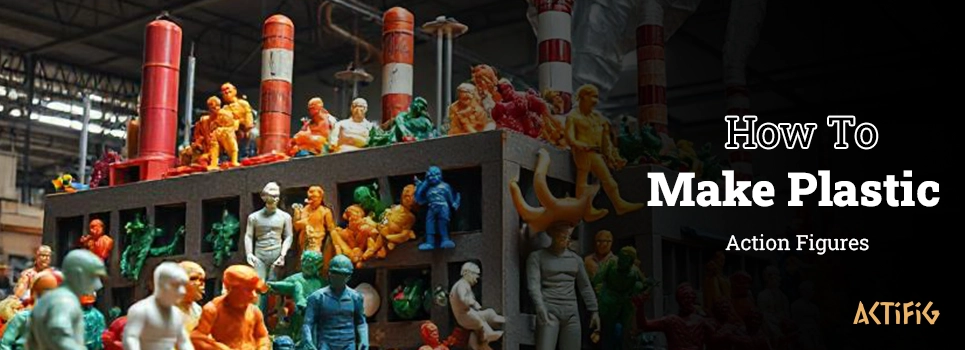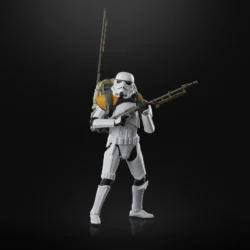No products in the cart.
Ever gazed at an action figure and thought, “I could make that”? The allure of bringing a character to life, holding a tangible piece of your imagination, is a powerful draw. Learning how to make plastic action figures opens a new realm of creativity, allowing you to craft unique heroes, villains, or entirely original beings. This journey from a simple idea to a fully formed figure can be incredibly rewarding. While it requires patience and skill, understanding the core principles of how to make plastic action figures can transform you from a collector into a creator, offering a unique connection to the characters you design.
Planning Your Custom Action Figure: The Blueprint for Awesome
Before any plastic is poured or clay is sculpted, a solid plan is paramount. This foundational stage dictates the success and satisfaction you’ll derive from your project. Rushing this phase often leads to frustration later on. Taking the time to thoroughly plan ensures your vision is clear and achievable, setting you up for a smoother creation process. Consider this the architectural design phase for your miniature champion or formidable foe.
Concept Development and Initial Sketching
Every great action figure begins as an idea. What character do you want to create? Is it based on an existing intellectual property, or is it entirely original? Start by sketching your concept from multiple angles – front, back, and side views are essential. These initial drawings don’t need to be masterpieces, but they should clearly define the figure’s silhouette, key features, and overall proportions. Think about its backstory and personality; these elements can subtly influence its pose and design details, making your figure more compelling.


Understanding Scale, Articulation, and Character Details
Decide on the scale of your figure. Common scales include 1:18 (around 3.75-4 inches) or 1:12 (around 6 inches), but you can choose any size. Scale affects material costs and the level of detail possible. Next, consider articulation. How many points of movement do you want? More articulation means more complex engineering for joints. Finally, list out all specific character details – clothing folds, weaponry, facial expressions, and unique textures. These details will guide your sculpting and material choices.
Gathering Your Arsenal: Essential Materials and Tools
With your design finalized, it’s time to assemble the necessary supplies. The quality of your materials and the appropriateness of your tools will significantly impact both the process and the final product. Investing in decent quality items from the start can save you headaches and improve the outcome. Think of this as equipping your personal toy-making workshop for the creative tasks ahead, ensuring you have everything you need before you dive into how to make this action figures.
Choosing the Right Plastics for Your Project
The “plastic” in plastic action figures can refer to several materials. For DIY projects, polyurethane resins are a popular choice. They come in two parts (resin and catalyst) that, when mixed, cure to a hard, durable plastic. These resins can capture fine details and are relatively easy to work with. Other options include epoxy resins or even thermoplastics if you have access to injection molding (which is more for mass production). For initial sculpting masters, polymer clay or epoxy putty are commonly used before any molding or casting.
The Sculpting Stage: Bringing Your Vision to Life in 3D
This is where your 2D sketches begin to take physical form. Sculpting is an art that requires practice, but it’s also incredibly satisfying. Whether you choose traditional methods or digital avenues, the goal is to create a “master” sculpture that will be used to make your molds. This master is the archetype, the original from which all your plastic duplicates will be born. Patience here is key to a professional-looking result.
Traditional Sculpting Techniques with Clay or Putty
For traditional sculpting, start by building an armature—a wire skeleton—to support your sculpture and define its pose. Apply your chosen sculpting medium (polymer clay like Super Sculpey, or an epoxy putty like Aves Apoxie Sculpt) over the armature, gradually building up forms and refining details. Use your sculpting tools to shape muscles, fabric folds, and facial features. Remember to constantly refer back to your design sketches. Polymer clay needs to be baked to harden, while epoxy putties cure chemically over time.
An Introduction to Digital Sculpting and 3D Printing for Masters
Alternatively, digital sculpting offers immense flexibility. Software like ZBrush or Blender allows you to sculpt in a virtual 3D environment with powerful tools and the ability to easily undo mistakes. Once your digital sculpt is complete, it can be 3D printed using resin or filament printers to create a physical master. This master can then be smoothed and prepared for mold making, just like a traditionally sculpted piece. This method is increasingly popular for achieving intricate details and precise forms in the process of how to make plastic action figures.
Steps to Make Plastic Action Figures
Once your master sculpt is perfected and hardened, the next critical step in how to make plastic action figures is creating a mold. The mold is what allows you to replicate your sculpture in plastic. Silicone rubber is the go-to material for most DIY figure makers because of its flexibility, durability, and ability to capture fine details. This stage requires precision and careful planning to avoid air bubbles and ensure easy de-molding.
Creating Your Own Silicone Molds
Typically, a two-part mold is created. Secure your master sculpt in a container (like a Lego box or a custom-built enclosure made from foam core). Ensure there are “keys” – small indentations or protrusions – that will help align the two halves of the mold perfectly. Mix your two-part silicone according to the manufacturer’s instructions and pour it slowly over one half of your master, ensuring it covers the sculpt completely and avoids trapping air. Once cured, remove the container walls, apply a mold release agent to the cured silicone surface, rebuild the container walls, and pour the second half.


Preparing Molds for Flawless Plastic Casting
After the second half of the silicone mold has cured, carefully separate the two halves and remove the master sculpt. You now have a negative cavity of your figure. Before casting, it’s wise to clean the mold gently, removing any debris. Some figures might require multiple smaller molds for different parts (arms, legs, head, torso) which will be assembled later. For complex shapes, you might need to cut small channels or “vents” into the mold to allow air to escape as the plastic is poured, preventing air bubbles in the final cast.
Finishing Touches: Painting and Detailing Your Creation
An unpainted action figure is like a blank canvas. The painting and detailing stage is where your figure truly comes alive, imbued with personality and character. This requires a steady hand and an eye for detail, transforming a monochrome plastic shape into a vibrant collectible. This is often the most enjoyable part for many who embark on the journey of how to make plastic action figures.
Priming, Painting Techniques, and Color Choices
Before applying color, it’s crucial to prime your figure. A good primer helps paint adhere to the plastic and provides a uniform base. You can use:
- Spray-on primers (acrylic-based are common)
- Brush-on primers for more control in tight areas
For painting, acrylic model paints (like Vallejo, Citadel, or Tamiya) are excellent. Techniques include:
- Base coating large areas with solid colors.
- Layering to build up highlights and shadows.
- Dry brushing to pick out raised details and textures.
- Washes (thinned paint) to settle into recesses and add depth. Airbrushing can provide smooth, even coats, especially for larger surfaces.
Adding Fine Details, Accessories, and Protective Sealants
Fine-tipped brushes are essential for painting eyes, logos, and other intricate details. This is where your figure’s character shines. If your figure has accessories (weapons, tools), paint them separately and attach them once complete. Finally, to protect your paint job from chipping or rubbing off during handling, apply a clear sealant. Sealants come in matte, satin, or gloss finishes, so choose one that suits the desired look of your figure. This final coat ensures your hard work lasts.
Level Up Your Craft: Tips for More Advanced Figure Making
Once you’ve mastered the basics of how to make plastic action figures, there are always new techniques to explore. Consider experimenting with translucent resins for ghostly effects or embedding small LED lights for illuminated features. Learning advanced joint construction, like ball joints or ratchet joints, can significantly improve articulation. Fabric elements for capes or clothing can add another layer of realism. Don’t be afraid to combine traditional sculpting with 3D printed parts for the best of both worlds. The journey of improvement is endless and deeply rewarding.
Find Your Next Masterpiece: Why Choose Actifig for Your Collection?
As you can see, the process of how to make plastic action figures is intricate, requiring dedication, skill, and a fair bit of trial and error. It’s a fulfilling hobby for those passionate about creation. However, if you’re looking to expand your collection with professionally crafted, highly detailed, and ready-to-display action figures without investing the considerable time and resources into making them yourself, Actifig is your premier destination.
We at Actifig curate an incredible selection of action figures from all your favorite franchises, crafted by masters of the art. Skip the learning curve and the mess; dive straight into the joy of collecting. Explore our extensive catalog today and find the perfect heroes and villains to bring your display shelves to life. Your next amazing collectible is just a click away at Actifig!
Frequently Asked Questions
What’s the best plastic for beginners?
Polyurethane resin is popular. It captures detail well and is relatively easy to use for casting small batches at home.
Do I need a 3D printer to make action figures?
No, it’s not essential. Traditional clay sculpting is a valid and widely used method for creating master figures for molding.
How long does it typically take to make one figure?
This varies greatly, from a few days for a simple figure to several weeks or months for a complex, highly detailed one.










There are no comments yet.